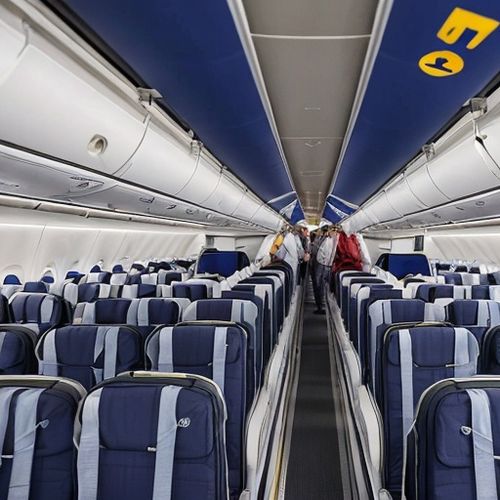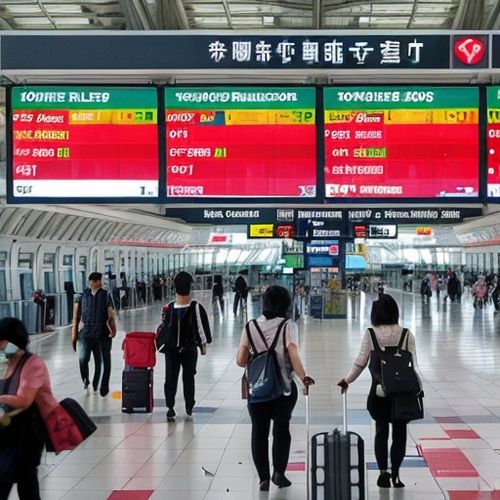Canada has recently announced a significant easing of visa restrictions for Chinese tourists, marking a pivotal shift in its travel and immigration policies. The new measures, which include granting 10-year multiple-entry visas, are expected to foster stronger ties between the two nations while boosting Canada’s tourism and economy. This move comes as part of a broader strategy to attract more visitors from China, one of the world’s largest outbound travel markets.
The decision to relax visa requirements reflects Canada’s recognition of the growing importance of Chinese tourists. Over the past decade, the number of Chinese travelers visiting Canada has surged, driven by rising disposable incomes and an increasing appetite for international travel. By offering longer validity and multiple entries, the Canadian government aims to make the country a more appealing destination for Chinese nationals, who often plan multiple trips abroad for leisure, business, or family visits.
The 10-year multiple-entry visa is a game-changer for Chinese tourists. Unlike single-entry visas, which require travelers to apply anew for each visit, the new policy allows holders to enter Canada multiple times over a decade, provided each stay does not exceed six months. This flexibility is particularly beneficial for frequent travelers, such as business professionals, students, and families with relatives in Canada. It eliminates the bureaucratic hassle of repeated applications, saving both time and money for applicants.
Industry experts predict that the visa relaxation will lead to a substantial increase in Chinese visitors to Canada. The country’s diverse attractions—from the stunning landscapes of Banff National Park to the vibrant multicultural cities like Toronto and Vancouver—have long been popular among Chinese tourists. With easier access, more travelers are likely to explore Canada’s lesser-known regions, spreading economic benefits beyond major urban centers. Small businesses, hotels, and tour operators stand to gain significantly from this influx.
The economic implications of this policy shift cannot be overstated. Chinese tourists are known for their high spending power, particularly on luxury goods, dining, and experiences. In 2019, before the pandemic disrupted global travel, Chinese visitors spent over CAD 1 billion annually in Canada. The new visa rules are expected to help the tourism sector recover from the losses incurred during the COVID-19 crisis and potentially exceed pre-pandemic levels. Local economies, especially in tourist-heavy provinces like British Columbia and Ontario, are poised to reap the rewards.
Beyond tourism, the relaxed visa rules are likely to strengthen bilateral relations between Canada and China. Easier travel facilitates cultural exchange, academic collaboration, and business partnerships. Chinese students, who constitute the largest group of international students in Canada, may also find it more convenient to visit home during breaks or have family members visit them. This people-to-people connectivity could pave the way for deeper diplomatic and economic cooperation in the long run.
However, the policy is not without its critics. Some argue that the streamlined visa process could pose security risks or lead to overstays. Canadian authorities have addressed these concerns by emphasizing robust background checks and adherence to existing immigration laws. The multiple-entry visa does not guarantee entry; border officials retain the discretion to deny admission if travelers fail to meet requirements. The government has also reiterated its commitment to maintaining a balance between openness and security.
The timing of this announcement is noteworthy. As global travel rebounds post-pandemic, countries are competing fiercely to attract international tourists. Canada’s decision positions it as a more accessible destination compared to competitors like the United States, which has maintained stricter visa policies for Chinese nationals. By capitalizing on this opportunity, Canada hopes to secure a larger share of the lucrative Chinese travel market and reinforce its reputation as a welcoming and inclusive country.
For Chinese travelers, the new visa rules are a welcome relief. The application process, though still rigorous, has been simplified with clearer guidelines and faster processing times. The 10-year validity aligns with similar visas offered by other countries, such as the U.S., but with fewer restrictions. This parity makes Canada an even more attractive option for those planning long-term travel or frequent visits.
In summary, Canada’s decision to ease visa restrictions for Chinese tourists is a strategic move with far-reaching benefits. It not only enhances the country’s appeal as a travel destination but also strengthens economic and cultural ties with China. While challenges remain, the potential rewards—for both nations—are substantial. As the world emerges from the shadows of the pandemic, policies like these will play a crucial role in shaping the future of global travel and international relations.

By Rebecca Stewart/Apr 7, 2025

By Sophia Lewis/Apr 7, 2025

By Emily Johnson/Apr 7, 2025

By Laura Wilson/Apr 7, 2025

By David Anderson/Apr 7, 2025

By Benjamin Evans/Apr 7, 2025

By William Miller/Apr 7, 2025

By Emma Thompson/Apr 7, 2025

By Benjamin Evans/Apr 7, 2025

By Noah Bell/Apr 7, 2025

By Elizabeth Taylor/Apr 7, 2025

By George Bailey/Apr 7, 2025

By Olivia Reed/Apr 7, 2025

By Ryan Martin/Apr 7, 2025

By George Bailey/Apr 7, 2025

By Laura Wilson/Apr 7, 2025

By Laura Wilson/Apr 7, 2025